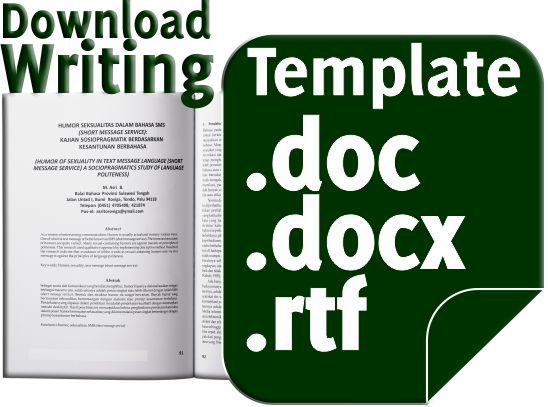Personal Pronoun in Muna Language
Abstract
Personal pronouns in Muna Language are different with Indonesian language or any other vernacular languages. This writing aimed at describing the forms of personal pronouns in Mula language. The methods used for data collection are observation, conversation, and introspection. Data were then analyzed with unified intralingual method. The results indicated two forms of personal pronouns in Muna language. First, personal pronoun that can stand alone as free morphem comprising of personal pronoun I (inodi/indodi/idi ‘I”; intaidi ‘we both’; and intaidi:mu ‘we all’); (b) personal pronoun II(ihintu ‘you’ and ihintuumu or ihintoomu ‘you all’); (c) personal pronoun III (anoa ‘he/she’ and andoa‘they’). Second, personal pronouns which are appended to the basic form of verbs, adjectives, and nouns as bound morpheme. These pronouns are (a) ae-, a-, ao-, -mu, and -kanau meaning ‘I’; (b) dae-, da-, dao-, da-e, and -nto meaning ‘we both’; (c) tae-, tao-, ta-, ta- ... -e, -mani, and -kasami meaning‘we’; (d) omo-, ome-, o-, -gho, o-... -e, and -mu meaning ‘you’; (e) omo- ... -mu, ome- ... -mu, o- ... -e:mu, -gho:mu, and -omu meaning ‘you all’; (f) nae-, ne-, -no, -ane, and no- ... -e meaning ‘she/he’;(g) dae-, do-, de-, -nda, -ndo, and do- ... -e meaning ‘they’. Personal pronouns in the form of morphemes are appended to the basic form of verbs, adjectives, and nouns such as prefixes, suffixes, and simulfix.
References
Alwi, Hasan et al. 2003. Tata Bahasa Baku Bahasa Indonesia. Jakarta: Balai Pustaka.
Berg, Rene van Den dan La Ode Sidu Marafat. 2013. Kamus Muna-Indonesia. Yogyakarta: Pustaka Puitika.
Chaer, Abdul. 2008. Morfologi Bahasa Indonesia: Pendekatan Proses. Jakarta: Rineke Cipta.

Copyright (c) 2014 Siti Fatinah

This work is licensed under a Creative Commons Attribution-NonCommercial-ShareAlike 4.0 International License.


